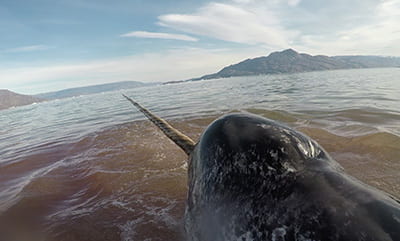Marine Science Journaling
Hone your scientific observation skills to discover incredible structures and functions that help animals survive in the ocean environment. Draw and write your observations and thinking. Most activities are appropriate for ages 6 and up. Young children will need assistance with reading and writing.
Seymour Science Journaling Activities
- Can Jewel Stars Sense and Respond to Changes? (ages 8 and up)
- Are Jewel Stars Living Things? (ages 6 and up)
Investigating Marine Animal Structures and Functions Journaling Activities (ages 6 and up)
- (Student Pages) Science Journal–Investigating Marine Animal Structures and Functions
- (Teacher/Adult) Teacher Overview–Investigating Marine Animal Structures and Functions
- (Teacher/Adult and Student Pages) Deep Look Marine Science Journaling
Fourth and fifth-grade students and teachers will “Flip for Sea Stars” in this 5-part lesson sequence that targets NGSS 4-LS1.
Use the Flip for Sea Stars Seymour Science Journal for the five-part lesson sequence and activity instructions.
- Part 1: STARS ALIVE! Watch a time-lapse video of sea stars and observe how they sense their environment.
- Part 2: FLIPPED OUT. Next, investigate how a bat star senses and responds to being flipped over.
- Part 3: SYSTEMS WORKING TOGETHER. Learn about how a sea star’s fascinating body systems work in this Shape of Life animation.
- Part 4: CHALLENGE YOUR SENSES. Now investigate how your own body works to sense and respond with your eyes closed.
- Part 5. STAR COMPARISON. Reflect on what you learned to compare a sea star to a human.
For the general public. “Flip For Sea Stars” in this video featuring clips from some of the lessons.
Serene Marine Moments
Meditate on marine wonders to sharpen observation skills and develop a deeper appreciation for our ocean’s inhabitants. This video is short and without narration, great for centering and focusing students on what they notice and wonder to develop their own questions.
Seymour Creature Features
Travel behind the scenes through these videos for a deeper look at some of your favorite Seymour Center organisms.
Jewel Star (Pisaster giganteus)
Bat Star (Patiria miniata)
After you watch the bat star video, draw and write about what you learned. Then, model your own bat star with this craft activity to discover even more survival structures. Create your own realistic model of a bat star to learn about the special structures that help these sea stars see, eat, and move around.
Hooded Nudibranch (Melibe leonina)
California Sea Cucumber (Parastichopus californicus)
Investigate From Home or School
Dive into marine science investigations and engineering design challenges from home with Seymour Center lessons that support the Next Generation Science Standards (NGSS).
Super Survival Structures Solve Problems
In this fascinating NGSS lesson sequence designed for first-grade teachers, students investigate marine animals’ body structures and the different ways they function for survival. Then, students apply their learning to engineer an invention to help solve one of two plastic pollution problems. Access the easy-to-use hyperdoc teacher guide and student lessons here. This 5-E lesson sequence supports NGSS standards 1-LS1-1 and K-2-ETS1-2.
Narwhals and Noise: a Video Expedition
Explore the underwater soundscape of narwhals and hear for yourself how humans are changing it. Experience how Dr. Terrie Williams and her team design research with dolphins at UC Santa Cruz and narwhals in the Arctic Ocean to uncover the potential effects of noise pollution. Meet Donley and Rain, Long Marine Lab’s resident bottlenose dolphins, to learn how they help develop the technology needed to understand and protect wild narwhals for future generations.
Designed for students ages 8 and up, this virtual expedition consists of six short video modules. Videos include prompts to engage students in auditory and visual observations, collecting and interpreting data, and constructing explanations. Great for science journaling and class discussions. Appropriate for use with the whole class or individually.
Module 1: Exploring oceanic noise
Module 2: Investigating underwater sounds in Greenland
Module 3: New noises in the arctic
Module 4: Dolphins as research partners
Module 5: Measuring dolphin heart rate
Module 6: Narwhal heart rates and noise

Click here to join our Educator Mailing List.

